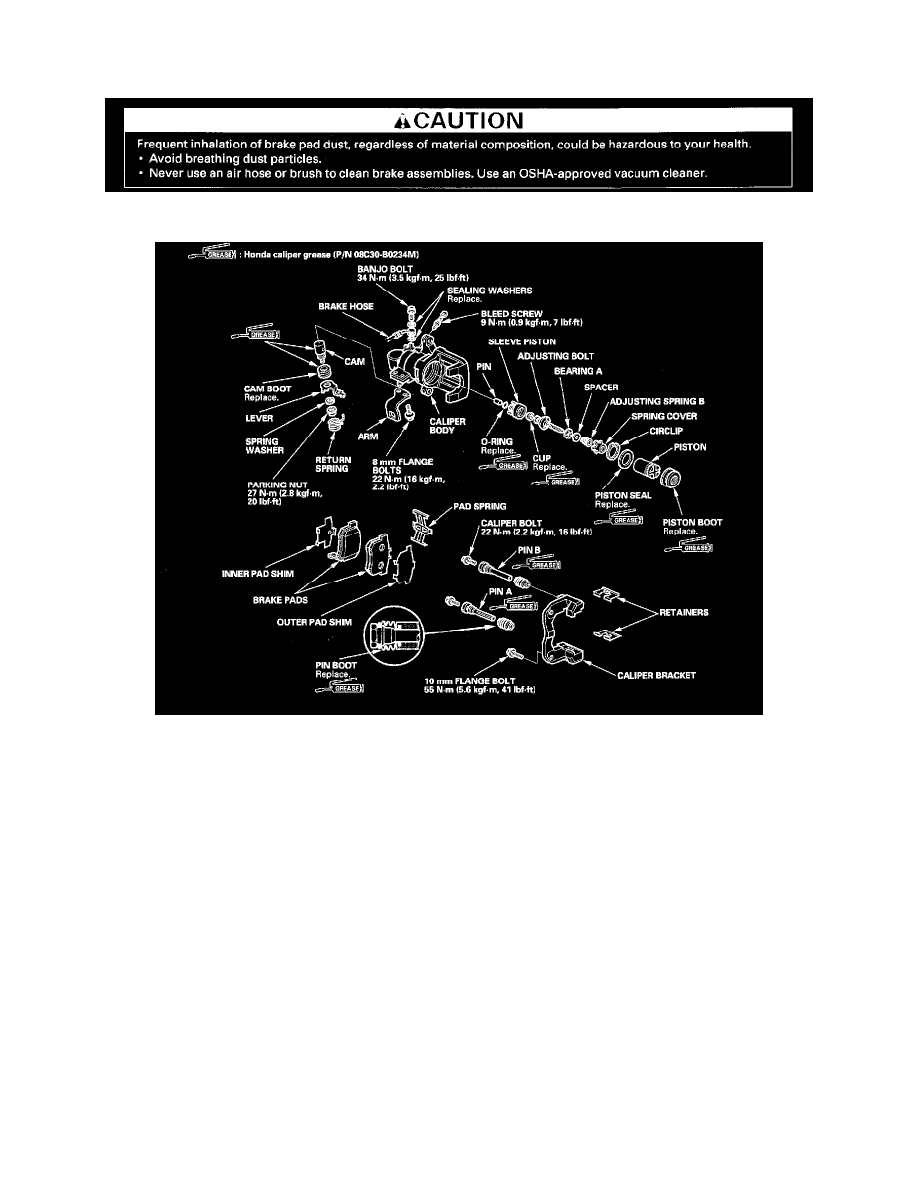RSX L4-2.0L (2005)

Brake Caliper: Service and Repair
Overhaul
Rear Brake Caliper Overhaul
Remove, disassemble, inspect, reassemble, and install the caliper, and note these items:
^
Do not spill brake fluid on the vehicle; it may damage the paint; if brake fluid gets on the paint, wash it off immediately with water.
^
To prevent dripping, cover disconnected hose joints with rags or shop towels.
^
Clean all parts in brake fluid and air dry; blow out all passages with compressed air.
^
Before reassembling, check that all parts are free of dust and other foreign particles.
^
Replace parts with new ones as specified in the illustration.
^
Make sure no dirt or other foreign matter contaminates the brake fluid.
^
Make sure no grease or oil gets on the brake discs or pads.
^
When reusing pads, always reinstall them in their original positions to prevent loss of braking efficiency.
^
Do not reuse drained brake fluid. Use only clean Honda DOT 3 Brake Fluid from an unopened container. Using a non-Honda brake fluid can
cause corrosion and shorten the life of the system.
^
Do not mix different brands of brake fluid as they may not be compatible.
^
Coat the piston, piston seal groove, and caliper bore with clean brake fluid.
^
Replace all rubber parts with new ones whenever disassembled.
^
After installing the caliper, check the brake hose and line for leaks, interference, and twisting.
Brake Hose and Line Inspection
1. Inspect the brake hoses, for damage, deterioration, leaks, interference, and twisting.
2. Check the brake lines for damage, rusting, and leakage. Also check for bent brake lines.
3. Check for leaks at hose and line joints or connections, and retighten if necessary.
